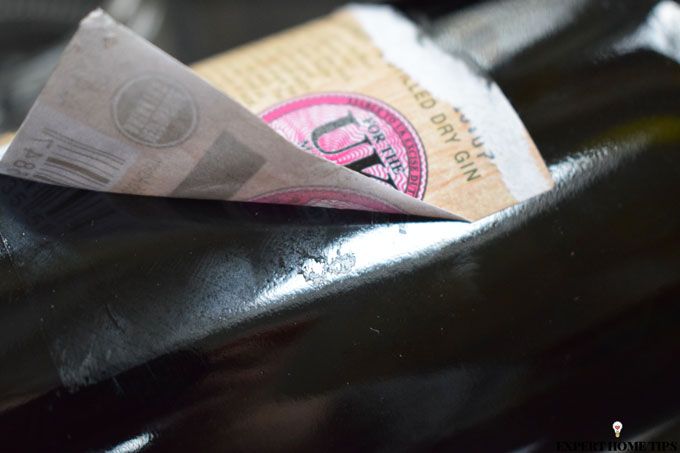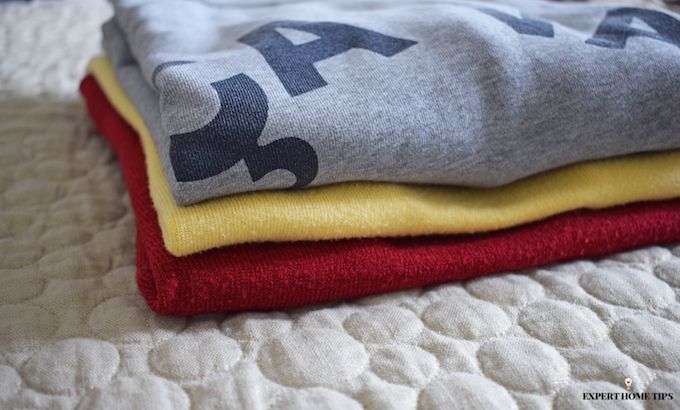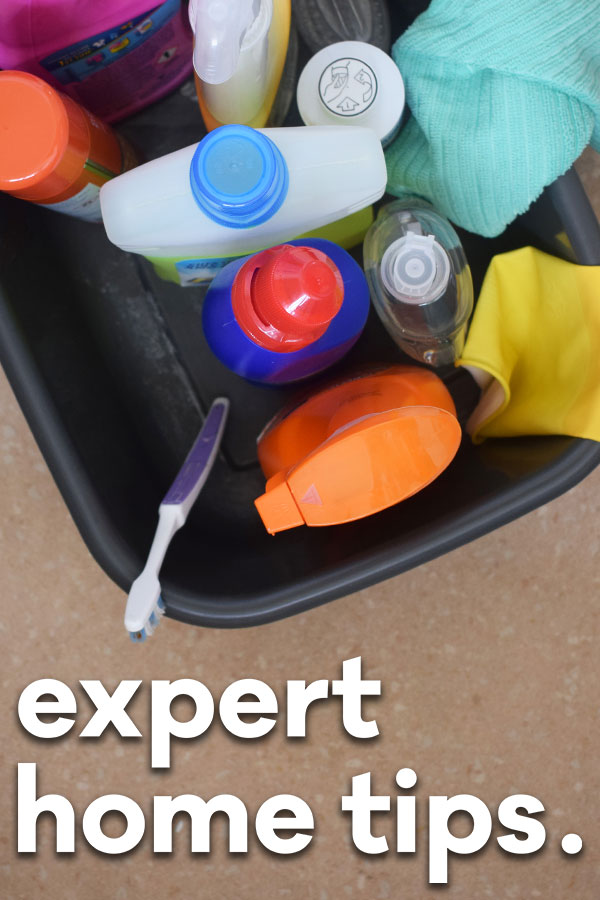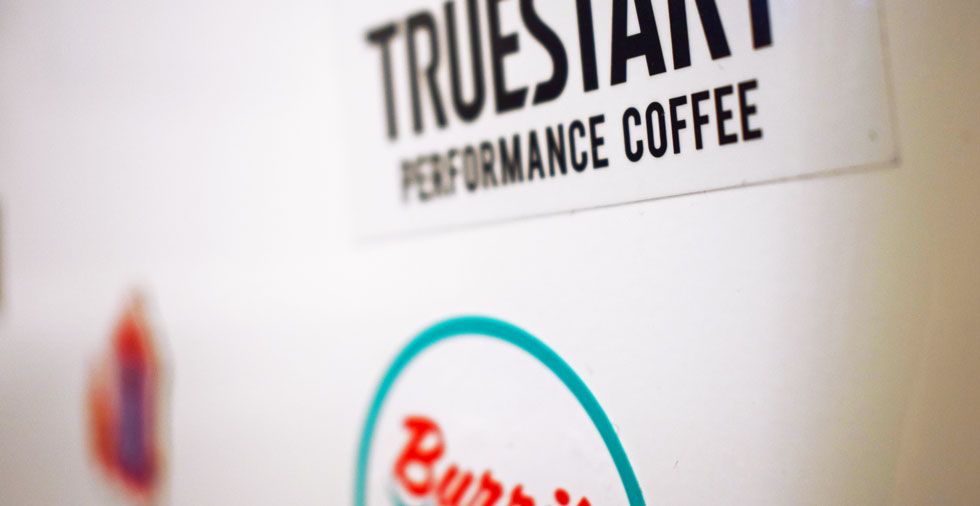- How to remove sticker residue from metal, plastic & wood
- How to remove sticker residue from glass & windows
- How to remove sticker residue from fabric & clothes
Stickers can be a real nuisance. Whether it's you, the kids or the retailers who've put them on, getting them off can be near impossible sometimes - not to mention frustrating.
From glass jars and windows to furniture and even clothes, today we're showing you how to remove sticker residue quickly and easily. Follow our steps to remove every single spot of stickiness and you'll never be able to tell they were there to begin with!
Ready to get de-sticking? Then let's get started.
How to remove sticker residue from metal, plastic & wood

Metal
The easiest (and most efficient) way to remove sticker residue from metal is with rubbing alcohol or hydrogen peroxide. Alcohol is great at breaking down the adhesive and is also unlikely to affect the finish as it's so pure.
TRY IT: Soak a cotton ball in rubbing alcohol or hydrogen peroxide and hold over the residue, then wipe clean.
No rubbing alcohol? Try rubbing baby oil or coconut oil instead to loosen it.
Plastic
When it comes to plastic or vinyl, you're better to stay away from harsh products. Often the best sticker remover solution is a household product - your usual washing up liquid and some vinegar should do.
TRY IT: Ideally, you'll want to soak the object in hot, soapy water so that the remaining sticker residue can be saturated. If this isn't possible, hold a soaked cotton ball over the area. Then, wipe the remnants away with a clean cloth and some white vinegar.
Wood
With wood, you need to be even more careful as, unlike the materials listed above, products can not only ruin the finish but also soak into it. Similarly to plastic, washing up liquid could be a good option and is a safe bet too. If that doesn't work, turn to WD-40 or baby oil.
TRY IT: Before you start, it's best to remove as much of the adhesive residue as you can - a credit card can be used to do this. Then, slightly dampen the area with a cloth soaked in soapy water. Leave for 10 minutes then try to wipe clean. If this isn't effective and your wood is varnished, apply baby oil or WD-40 using a cotton wool pad. Gently scrub using a clean cloth, then wipe clean.
How to remove sticker residue from glass & windows

You'll be pleased to hear that removing sticker residue from glass - be that jars or windows - is much easier. You don't need to be as delicate.
Best of all, chances are you already have what you need to get rid of that adhesive residue for good in your bathroom.
Yep, you guessed it - acetone nail polish remover.
TRY IT: Rub a cotton pad soaked in acetone onto the glass in circular motions and the sticker residue should come clean off.
How to remove sticker residue from walls
Did you decide to skip on the wallpaper and go for a decal instead? Or perhaps -and probably more likely - the kids have taken to interior designing the house themselves equip with their sticker books.
Whatever the reason there are for the stickers on your walls, they can be some of the hardest to remove.
But, that's not to say it's not possible, and the key to getting your walls clean again is a rather unlikely suspect...pencil erasers or rubbers.
TRY IT: Remove as much of the sticker as you can, either by peeling it or by gently pushing under it with a credit card. Then, begin to rub an eraser over the area, which should break the remaining paper and sticker residue down. Finish up with some hot soapy water and your walls will be as good as new again.
How to remove sticker residue from fabric & clothes

When it comes to clothes, you'll want to ignore everything we've taught you about sticker residue so far. It's unlikely your vintage-look jeans or cashmere sweater will thank you for being rubbed with harsh chemicals.
Instead, turn to something you already know works for getting all manner or mishaps out of your clothes - detergent.
TRY IT: Be sure to read the care label first to choose the appropriate detergent for your garment, then, once identified, rub a good quality one directly into the sticker residue. Follow this up with a normal wash, adhering to the manufacturer's instructions.
Q&A:
Can acetone remove sticker residue?
Yes. Acetone can be safely used to remove sticker residue from glass, but shouldn't be used in every circumstance. Acetone is extremely harsh and can damage surfaces.
How do you remove sticky residue from a laptop?
To remove sticky residue from your laptop, spray WD-40 onto the area, leave for 10 minutes, then rub clean with a microfibre cloth. This should only be used on flat, external areas of your laptop where you can be sure it won't leak inside.
What household products remove sticker residue?
Household products such as acetone nail polish remover, washing up liquid, WD-40 and distilled white vinegar can all be used to remove sticker residue. They should not, however, be used interchangeably as every material must be treated differently.


hair dryer very useful for removing stickers from glass and hard surfaces
Thanks for the tip, Philip!
Can any body tell me the easiest way to get a sticker of a eyeliner pencil.
The easiest way to get a sticker off an eyeliner pencil is to use a combination of heat and a tool to scrape it off. Another option is to use a sticker remover solution and gently scrape it off using a spatula.
Have you any tips for stickers on card/ cardboard - for example on a child's board game box. A couple of times the stickers have pulled the colour off and it's not good when giving a present to someone to have it looking like that. Thanks
Hi Gillian! This is a tricky one, but there's an easy fix. Take a hair dryer (on a medium-hot setting) or a heat gun (on a low setting) and blast the sticker with hot air. As you blast it, gently peel at the sticker. You should have no problem removing it - damage-free!
previously I have used masking tape to stop the paint from going on the glass when painting doors, after I use baby wipes the cheaper the better and just rub and all the sticky residue is gone.
Baby wipes do have some surprising cleaning abilities!
Toothpaste is great on metals, glass, and plastics I repair laptops and computers. Put a small amount on the sticker use an old toothbrush rub paste in small circles over sticker it will remove sticker use a damp cloth to clean paste and to see how you got on might have to repeat the whole process if very tough sticker. Toothpaste is also a good cleaner. I get dirty computers and laptops from smokers and keyboards can get dirty toothpaste on a damp cloth rub over keys the same process as to remove sticker
Thanks for sharing, Michael!
If after removing a label it leaves some sticky residue then use the label you have removed by dabbing it on the sticky residue and it will remove most if not all of it. Another tip is for jars and containers fill with very hot water which melts the glue making labels easier to remove.
Great ideas, Amanda!
I always use lighter fluid, it works a bit like WD40 only slightly more effective. I buy lighter fluid from Poundland. Nice and cheap ?
Great tip, Irene!
Some useful information but what a shame it wasn't proof read before publishing. There are 5 typos / predictive text errors that halt you in your tracks as you try to work out what the correct word should have been. Please don't rely solely on spellchecker.
Hi Barbara! Thanks for bringing this to our attention. Normally our articles are thoroughly checked over, but this one must have slipped through. Thanks for reading, and we're glad to hear that you found the information useful.
I have just received my ebook about an hour ago and I have misr of the easy clean items in my cupboard , I was not looking forward to starting. But with the helpfull tips now I'm raring to go, Thanks to the tips in the book . Anne-Marie
We're so pleased to hear that, Anne-Marie! Thank you for getting in touch.
Good advice overall. Acetone is compatible with polyethylene terephthalate, polyethylene and polypropylene. These are all flexible plastics, and can be identified by recycling resin codes. A cloth works best to contain the glue as it is not broken down and remains sticky after acetone evaporates. Acetone will strip, soften and smear paint and enamel substitues. I've had success using ethanol on ABS (fridge, remote control), and WD-40 on Acrylic (very fragile plastic). Light glues that are under the entire label on jars and coffee foils can be "melted" in soap or scrubbed down with soda (all of them), the lumps of heavy glue usually cannot. The paper may need to be scratched if it is waterproof.
lighter fluid is used by jewellers and unlike nail varnish remover does not leave a white residue.
Interesting tip!
The NHS issue something called medical adhesive remover, comes in a little spray can. Designed for dissolving glue from.plasters and bandages, I kept mine and find it ideal for getting price labels off books.
That's handy!